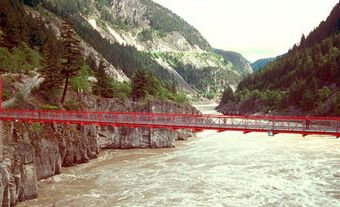Environmental Agencies
Environmental problems may require action by the environmental agencies of governments at 5 levels: international, national, provincial, municipal and Aboriginal. At the international level, activities include protection of whales, control of acid rain and the work of the International Joint Commission on water-quality questions. The federal government also negotiates treaties such as the attempt to establish an international treaty on climate change in Copenhagen (2009). Among national, provincial and municipal levels of government, powers and responsibilities are divided, but the divisions are frequently ambiguous and uncertain. A great deal of co-operation and co-ordination is required. Different departments at each level, and sometimes numerous legislative requirements for each department or agency, means that industries seeking approval for projects face a maze of legislation, which is costly and time consuming. At the federal and provincial levels, some governments are attempting to reduce costs without reducing standards by moving to a "single window" approval process in which one government agency would be responsible for co-ordinating all requirements for proposed projects. Municipal governments also make important environmental decisions as they relate to provision of drinking water, waste management (see Solid Waste Management) and natural areas within urban centres. Yet, they have few regulatory or taxation powers. Rather, legislation or responsibility for various environmental issues often rests in such other government departments as agriculture, culture, health, fish and wildlife, transportation, housing and municipal affairs and recreation, as well as other agencies and tribunals. Jurisdiction is frequently transferred from one agency to another, or may involve interdepartmental or intergovernmental agencies.
Since the 1990s, Indigenous peoples have gained recognition of their role in environmental management. Recent court decisions, including decisions by the Supreme Court of Canada, have upheld Aboriginal title and rights established by the Royal Proclamation of 1763. These decisions have determined that Aboriginal people have legal entitlements to natural natural resources and that governments and industry have a "duty to consult" Indigenous people if any resource development has the potential to infringe on their resource use. Aboriginal rights are second only to conservation measures and are to be given higher priority than those of commercial or recreational resource users. Additionally, treaties now signed between the federal government and several Indigenous peoples (eg, James Bay and Northern Quebec Agreement; and Inuvialuit Final Agreement) give Aboriginal people and institutions important decision-making powers related to wildlife and environmental management.
See also Land Claims; Environmental Law.

 Share on Facebook
Share on Facebook Share on X
Share on X Share by Email
Share by Email Share on Google Classroom
Share on Google Classroom



